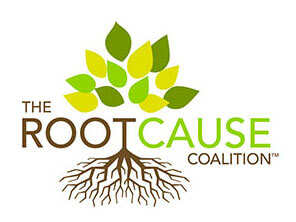Households with Food Allergies are Twice as Likely to Report Food Insecurity -
Households with Food Allergies are Twice as Likely to Report Food Insecurity -
Research from The Root Cause Coalition, in Partnership with Food Allergy Research & Education, Underscores the Importance of Addressing Food Allergies in the Context of Health Equity
Research from The Root Cause Coalition, in Partnership with Food Allergy Research & Education, Underscores the Importance of Addressing Food Allergies in the Context of Health Equity
(Washington D.C.) — New research from The Root Cause Coalition, in partnership with Food Allergy Research & Education (FARE), illustrates how Americans struggle with food. Findings from this study illustrate how the challenges around food allergies are essentially two-fold: 1) a general lack of understanding about how to handle and make sense of food allergies, and 2) inequities that exacerbate food allergy challenges among non-white people.
“We were pleased to partner with FARE on this study, bringing to light many of the challenges people with – and living with – food allergies face every day,” said Barbara Petee, President of The Root Cause Coalition. “Given that so many Americans are eating with individuals who have food allergies, this is an issue central to addressing access to, and understanding about, nutritious food.”
Consumers lack knowledge about how to deal with food allergies safely
While nearly half (44%) of survey respondents report sharing a homecooked meal or dining out with someone who has a food allergy in the last six months many facts about food allergies remain broadly misunderstood. For example, more than 4 in 10 incorrectly believe a food allergy that has caused only mild reactions is a mild food allergy; more than one-third don’t realize that, according to the Americans with Disabilities Act, food allergies are a disability (and nearly half report they are unsure).
In addition to misunderstanding food allergies, only 17% correctly identify the food manufacturer as the decision maker for cross contact warnings, while more than half (53%) incorrectly believe this authority belongs to the FDA. Another one in five reports being unsure about what entity decides what a company states about food allergen warnings like “may contain” and “made in a facility.”
Allergen labeling is also misunderstood by many respondents, with many examples tested in the research. One example reveals that more than half of individuals surveyed (with another one-third unsure) incorrectly believe that allergen-free labeling such as “peanut free” or “milk free” is regulated by law.
“This latest research shows what we have long known; that health equity is a primary concern for families in general, but especially for the food allergic community,” said Sung Poblete, PhD, RN and CEO of FARE. “It’s imperative that households with food allergies have access to food that is appropriate for them without fear of adverse reactions. Importantly, this study helps us continue our work of raising awareness, educating, and assisting those who are statistically shown to experience higher levels of food insecurity."
Americans with food allergies have trouble avoiding their allergens
More than half of households with food allergies say it has been at least sometimes difficult to avoid allergens when shopping for groceries over the past two years. This is true across food security levels and incomes. At the same time, nearly half of households with food allergies report at least some difficulty avoiding allergens when eating out, with 12% finding it always difficult.
Certain segments of the population, however, face additional food allergy challenges. For example, households with food allergies are twice as likely to report food insecurity; households with People of Color are also more likely to be eating and living with someone who has a food allergy and are more likely to report food insecurity. Similarly, households with People of Color are the most likely to report having trouble avoiding food allergens when shopping (31%, versus 21% of whites).
Methodology
1,000 interviews among adults age 18+ were conducted from March 4-9, 2022, using an online survey. The results were weighted to ensure proportional responses. The Bayesian confidence interval for 1,000 interviews is 3.5, which is roughly equivalent to a margin of error of ±3.1 at the 95% confidence level.
Please click here to view the full report.
